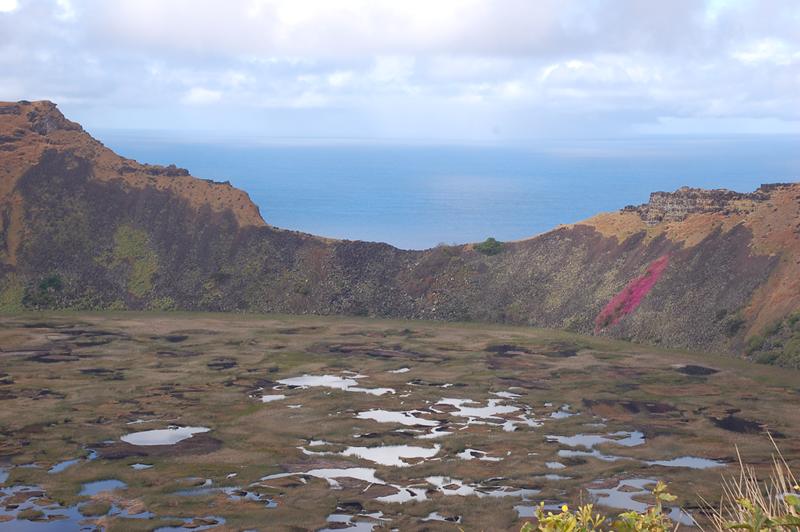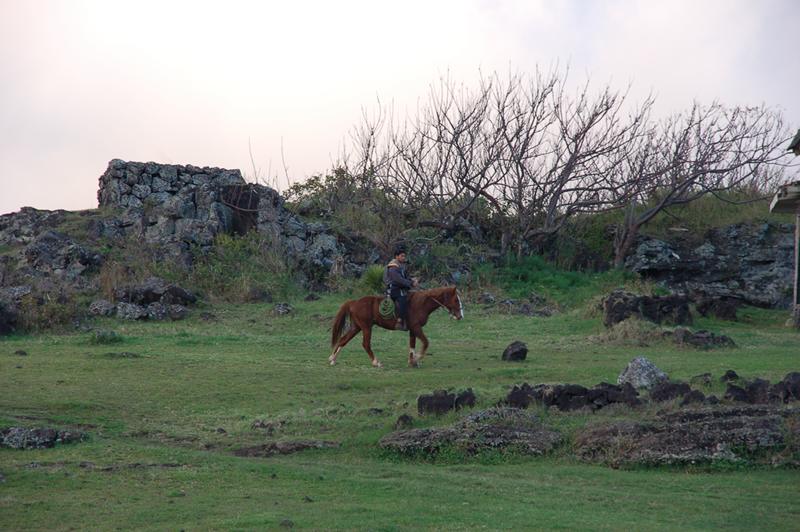Rapa Nui

|
27.09.80s 109.33.34w
Everything about this island is a bit of a mystery, even the name of the island is somewhat disputed. The local current name is Rapa Nui, but the island is Chilean owned and they call it Isla De Pascua. The original name was maybe Te Pito O Te Henua (The Navel of the World) but it is thought that the first name was probably Te Kainga (literally the land). Of course we (the English) all know the island as Easter Island (translated from the Dutch) as it was discovered on Easter Sunday.
On our first day we met an American Professor who has been doing field studies here for decades and he said the hardest thing for an archaeologist to get their head around was the fact that the whole island is an archaeological site. The island is full of moais (the stone statues), petroglyphs and weird stones. The island was stripped of trees to make room for agriculture, even the birds were dying out as so many of their eggs were eaten and in these harsh conditions the islanders spent their time and energy building massive stone statues to overlook their tribal village. Why they did this is a matter of great speculation and a lot of guesses including an alien theory!! The Captain Cook expedition in 1774 saw upright statues, but all the statues were knocked over by 1838, again nobody knows why for certain.
1862 is the year that Rapa Nui culture officially came to an end as the Peruvians raided the island for slaves and took away many of the chiefs and elders leaving no one able to read and write the Rongo Rongo tablets. Most islanders died on the way to Peru just 15 made it back to the island and brought smallpox with them. By 1877 the population was down from about 14,000 when they made most of the statues to 111. Incredibly even with today’s computers the Rongo Rongo tablets remain untranslated - maybe forever.
No one knows where the islanders came from for certain; maybe Austral Islands maybe Marquesas. The locals are campaigning for independence and had a sit in demonstration on the runway last year. The Chilean Navy used to rule the island and wouldn't even let them speak their own language so not surprisingly the islanders do not like Chilean rule.
The island has no rivers; all the water comes from an inland volcanic crater.
The islanders used to travel by horse (and some still do), but Kevin Costner made a film imaginatively called Rapa Nui at a cost of £20 million dollars and the islanders used the influx of money to buy cars and other luxury goods.
The island is very, very expensive and at the moment there is no really good hotels (one is being built). The food was great and plentiful but prices are not always printed and seemed to change at some places. Captain Cook in 1774 bought a basket of sweet potatoes but found that only the first layer was sweet potatoes the subsequent layers were all volcanic rock, showing the islanders as equally shrewd in trading!!!
We were both surprised by the temperature - all the guides describe the island as pleasantly warm all year round. There is nothing warm about temperatures of 18 - 22 degrees when for a year you've got used to 30 degrees. Needless to say we were freezing and the locals have the windows and doors open all the time with most of the tables outside!!! The generation of the older locals grandparents grew up just using caves or the stone huts at night only, spending all of the day outside. These days the caves are only used by fishermen and local couples. We went from no bedding to a sheet, blanket and a thick quilt. We cowered under the covers in the morning not wanting to get out in the cold. Every day (except for one) we basically wore most of our clothes, Murray looked well padded out with three T-shirts under his one long sleeve top.
|


